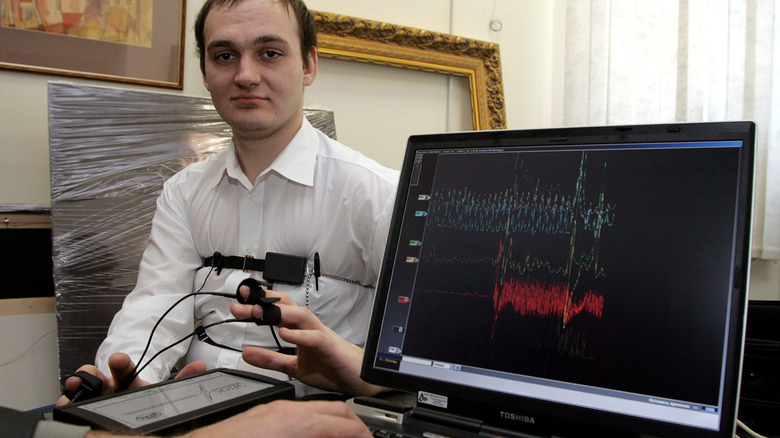
The FBI's Polygraph Predicament: Truth, Lies, and Questionable Accuracy
The Federal Bureau of Investigation (FBI) has found itself under scrutiny regarding its use of polygraph tests. While the agency confirmed it was using these tests to identify potential sources of information leaks to the press, further revelations indicated the FBI also used polygraphs to assess whether employees had made negative comments about FBI Director Kash Patel. This has raised questions about the scope and purpose of polygraph testing within the agency.
But how reliable are these tests, and what exactly do they measure?
Understanding Polygraph Tests: More Than Just Lie Detection
Contrary to popular depictions in movies and television shows, polygraph tests, often referred to as lie detectors, are not infallible tools for determining truthfulness. Instead, they measure physiological responses associated with psychological stress. These responses, such as changes in heart rate, blood pressure, respiration, and skin conductivity (sweating), are then analyzed to form an estimation of whether a person is being truthful.
The underlying principle is that when a person lies, they experience stress, which triggers these physiological changes. However, the link between these responses and deception is not always clear-cut, and the tests can be influenced by various factors.
A Brief History of the Polygraph
The concept of measuring physiological responses to detect deception dates back over a century.
- Early Innovations: Dr. James Mackenzie developed one of the first devices to measure heart rate activity using ink. This early polygraph utilized rubber attachments connected to veins in the neck and wrist, with a needle-based arm recording the signals on paper.
- The First Lie Detector: In 1921, John Larson, a medical officer working for the Berkeley Police Department, created the first lie detector machine that measured both blood pressure and respiration.
- Skin Conductivity Measurement: Around the same time, Leonarde Keeler developed a version that measured changes in skin resistance, based on the idea that a lying person sweats, altering the skin's electrical properties.
Modern polygraph machines build upon these earlier innovations, incorporating sensors to measure heart rate, blood pressure, respiration, and skin conductivity. Pneumographs are strapped to the chest to track heart rate and respiratory depth, an arm cuff measures blood pressure, and electrodes placed on the fingertips monitor changes in skin conductivity.
Polygraph Questioning Techniques
Two primary questioning formats are commonly used in criminal investigations:
- Comparison Question Test (CQT): This format involves asking a series of questions, including relevant questions about the crime, irrelevant questions, and comparison questions designed to elicit a physiological response. The subject's responses to the relevant questions are compared to their responses to the comparison questions.
- Guilty Knowledge Test (GKT): This format focuses on assessing whether the subject possesses knowledge about the crime that only a guilty person would know. It involves presenting the subject with multiple-choice questions, where only one option is related to the crime.
Before the actual polygraph examination, a pre-test interview is conducted to familiarize the subject with the process and ask preliminary questions. This is intended to establish a baseline and make the subject more comfortable.
The Problem with Polygraphs: Accuracy and Deception
The reliability of polygraph tests has been a subject of considerable debate. Experts and organizations, including the American Psychological Association (APA), have raised concerns about their accuracy. The APA states that "the idea that we can detect a person's veracity by monitoring psychophysiological changes is more myth than reality."
One of the main criticisms is that polygraph tests are susceptible to manipulation. Individuals can learn techniques to control their physiological responses and potentially deceive the test.
- Beating the System: Russell Tice, a former National Security Agency (NSA) whistleblower, claimed that circumventing polygraph tests was relatively straightforward. One method involves creating a physiological response, such as biting the tongue, even when answering simple questions, which disrupts the evaluation.
Furthermore, an honest person may exhibit nervousness when answering truthfully, leading to a false positive result. Conversely, a dishonest person may remain calm and collected, resulting in a false negative.
A committee comprised of experts from the U.S. National Academy of Sciences, the National Academy of Engineering, and the Institute of Medicine concluded that there is "little basis for the expectation that a polygraph test could have extremely high accuracy."
Legal Restrictions on Polygraph Use
Due to concerns about their reliability, the Employee Polygraph Protection Act prohibits most private employers from using polygraph tests to screen employees. This law reflects the widespread skepticism about the accuracy and fairness of polygraph testing in employment settings.
Alternatives to Traditional Polygraph Testing
Given the limitations of traditional polygraph tests, researchers are exploring alternative methods for detecting deception. One such system, EyDetect, focuses on measuring eye movement patterns to identify potential deception. However, these alternative methods are still under development and have their own limitations.
The FBI's current use of polygraph testing highlights the ongoing debate about the role and reliability of these tests in law enforcement and national security. While polygraphs may provide some insights, their limitations and potential for error must be carefully considered. The pursuit of more accurate and reliable methods for detecting deception continues to be an important area of research.


No comments:
Post a Comment